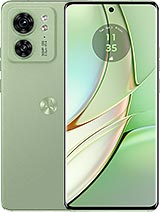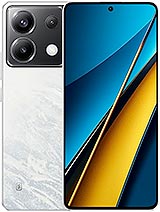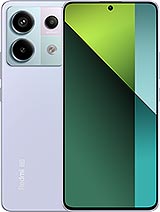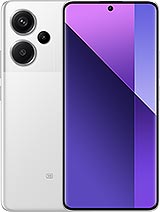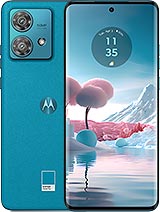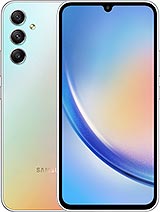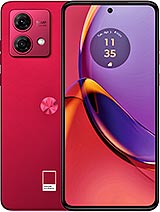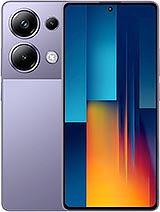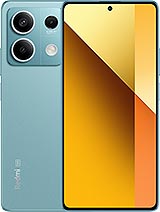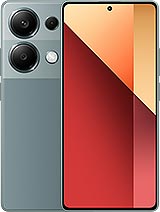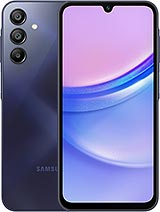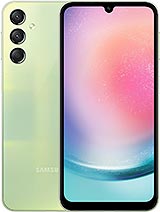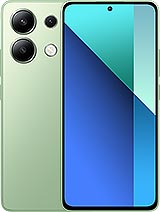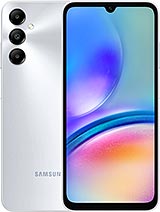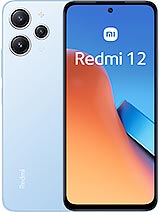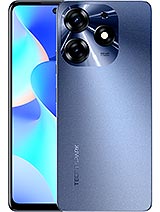Xiaomi Redmi Note 13 5G review

MIUI 14 on top of Android 13
The Redmi Note 13 5G runs MIUI 14 on top of Android 13. All Redmi Note 13 models will get an update to HyperOS later on.
Xiaomi hasn't committed officially to a specific number of future updates, but it will likely be the same as on the Poco X6 models - three years of major Android updates and an extra year with security patches only.

MIUI 14 has changed little over the 13th iteration in terms of overall user experience, and that's not bad. It's just as snappy and customizable as ever. Xiaomi has paid special attention to the haptics of this unit as well - we found the motor to be crisp, strong, accurate, and responsive. It reacts to many actions across the system and when navigating. There's even a haptic feedback intensity if you find it obtrusive or not strong enough.
There are some ads, but they can be stopped from within the Settings in the app that shows advertisements and/or recommendations.
We already did an extensive walkthrough of MIUI 14 on top of Android 13. You should check that out for a better overview of the UI and features.
Performance and benchmarks
The Redmi Note 13 5G is based on the MediaTek Dimensity 6080 chipset. It is a mid-range 5G chipset unveiled in Q1 2023 and made on a 6nm TSMC manufacturing node. However, the 6080 is actually a re-branded Dimensity 810, which dates back to 2021.

The Dimensity 6080 has an octa-core CPU setup with two ARM Cortex-A76 cores, clocked at up to 2.4 GHz and six Cortex-A55 ones, working at up to 2.0 GHz. The onboard GPU is a Mali-G57 MC2. The Dimensity 6080 is paired with 6GB, 8GB or 12GB of LPDDR4X RAM, clocked at 2133 MHz. For storage, you get to choose between 128GB or 256GB of expandable storage. Unfortunately, Xiaomi is using UFS 2.2 chips, which are on the slower side.
For reference, our review unit has 8GB of RAM and 256GB of storage, making it the middle-of-the-line variant.
Let's kick things off with CPU tests and GeekBench. The Dimensity 6080 inside the Redmi Note 13 holds up decently well within its price range. It is positioned to compete directly with chips like the Snapdragon 695 and the MediaTek Helio G99.
That being said, you could get a lot more performance for your money with a chip like the Dimensity 8020, 8050 or the Snapdragon 7s Gen 2. The Dimensity 7030 and 1080 also rank a bit higher in terms of CPU performance.
AnTuTu is a much more compound benchmark that includes GPU and memory tests. Once again, it places the Dimensity 6080 about where we would expect it to reside on the chart.
It is encouraging to compare the Redmi Note 13 to the OnePlus Nord N300 5G and its Dimensity 810. The newer Dimensity 6080 (as found inside the Redmi Note 13 and the Tecno Pova 5 Pro) scores much higher.
The Mali-G57 MC2 inside the Redmi Note 13 is not particularly powerful. GPU-wise, the Dimensity 6080 ranks along the likes of the MediaTek Helio G99 and the Snapdragon 695.
Yet again, however, you could get yourself a lot better GPU performance within the same budget.
In practical terms, the Redmi Note 13 runs its MIUI 14 software quite smoothly, with just the occasional slowdown and no noticeable stutters. There is enough power to handle daily tasks and even some light gaming.
Thermal-throttling
The Dimensity 6080 might not be particularly powerful, but at least it doesn't generate too much heat while doing its job. Thermal throttling is not a major issue on the Redmi Note 13. The phone holds performance very well over time and stress testing.
Also, the Redmi Note 13's surface doesn't heat up. It gets lukewarm, but that's about it. It always remains perfectly comfortable to hold.
Connectivity
The Redmi Note 13 offers dual SIM simultaneous 5G connectivity. Just be sure to get the 5G model instead of the 4G one, which is a similar but entirely different device.
Here, you get two nano-SIM card slots with SA/NSA 5G connectivity. Unfortunately, the SIM tray on the phone is a hybrid affair. You have to choose between a second SIM card or a microSD card for expandable storage. There appears to be no e-SIM support.

The Redmi Note 13 has dual-band Wi-Fi ac and Bluetooth 5.3 with LE support for local connectivity. There is also NFC on board, as well as an IR blaster.
There is no FM radio. For positioning, we find a GPS/GLONASS receiver. The Type-C port relies on a USB 2.0 connection, which means a theoretical maximum data transfer rate of 480 Mbps. There is USB OTG/Host support, but nothing more beyond that, like video output via USB Alt mode.

The Redmi Note 13 has a pretty good set of onboard sensors. These include a lsm6dso accelerometer, gyroscope combo, and AMS tcs3701 light and proximity sensor. The proximity sensor is, thankfully, a hardware one and works as expected, even though it is a bit slow to react. There is also a Memsic mmc5603 magnetometer. No barometer is present, though.
Reader comments
- jack
- 24 Apr 2025
- YUU
This phone not efficient usable its battery get hot very soon after using some times that phone no longer battery life.
- Knk
- 05 Jan 2025
- XKp
The Theme app is very buggy. You never know when it works especially after any OS updates. I'd rather that Xiaomi makes unavailable than be buggy. Feedback app to Xiaomi also does not work at all. I wonder what's the point of having it if i...
- Arun
- 12 Dec 2024
- IWU
Mine also redmi note 9 pro, its better than note 13 5g camera quality
